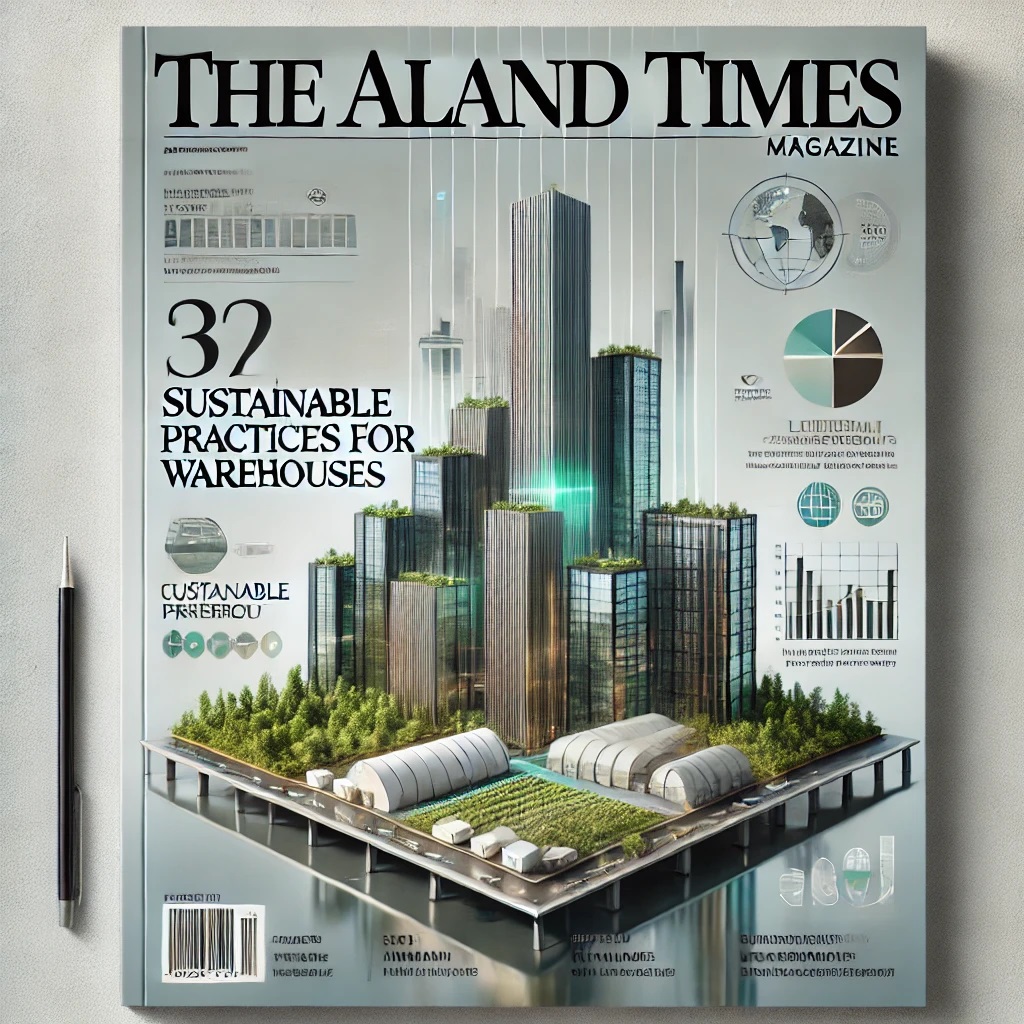Sustainable Practices for Warehouses
- Published Date: 21 Jan, 2025
-
4★ ★ ★ ★ ★(150)

What Makes Warehouses in Dubai Unique? Why Sustainability Matters for Warehouses in Dubai Current Challenges for Sustainable Warehousing in Dubai Energy-Efficient Lighting Solutions Solar Power Integration in Warehouses Water Conservation Practices Sustainable Building Materials Waste Management and Recycling Initiatives Smart Warehousing Technologies The Role of Automation in Sustainability Optimizing Inventory Management for Sustainability Green Transportation Solutions Employee Engagement in Sustainable Practices Government Policies Supporting Sustainability The Financial Benefits of Sustainable Warehousing Case Study: Sustainable Warehouses in Dubai How to Start the Journey Towards Sustainability The Role of ALand FZE in Sustainable Warehousing Real-Life Benefits of Sustainability in Warehouses Adopting Circular Economy Principles Carbon Footprint Measurement for Warehouses Future Trends in Sustainable Warehousing Common Misconceptions About Sustainability in Warehouses FAQs: Sustainability and Warehouses in Dubai Warehouses in Dubai are strategically located to connect East and West, offering proximity to major ports like Jebel Ali and world-class airports such as Dubai International Airport. With innovative free zones like Dubai South, these warehouses provide seamless connectivity and advanced infrastructure. Sustainability in warehouses for rent just an ethical choice; it’s a strategic necessity. The UAE’s Vision 2030 emphasizes reducing carbon emissions and achieving environmental harmony. Sustainable warehouses can significantly contribute to these goals while providing operational benefits like reduced utility costs and enhanced brand reputation. While Dubai leads in logistics infrastructure, challenges include: High energy consumption due to extreme temperatures. Limited water resources necessitating efficient usage. Balancing rapid industrial growth with environmental goals. Switching to LED lighting is a simple yet impactful step. LEDs consume up to 80% less energy and last significantly longer than traditional lights, reducing both costs and waste. Motion sensors and automated lighting systems can further optimize energy usage. Harnessing Dubai’s abundant sunlight can power warehouses sustainably. Installing photovoltaic panels on rooftops helps reduce dependency on fossil fuels while lowering electricity bills. Incentives from the UAE government for renewable energy projects make this a viable option. Efficient water use is crucial in Dubai's arid climate. Implementing rainwater harvesting systems, low-flow fixtures, and water recycling technologies ensures that warehouses operate with minimal water wastage. Warehouses can be constructed or retrofitted using materials like recycled steel, bamboo, and energy-efficient insulation. These materials not only reduce the environmental footprint but also enhance the building's thermal performance. Warehouses in Dubai can adopt zero-waste policies by: Recycling packaging materials. Composting organic waste. Implementing waste segregation systems to simplify recycling processes. IoT-enabled devices provide real-time data on energy usage, inventory levels, and more. Such technologies enhance operational efficiency and reduce resource wastage, contributing to sustainability. Automated systems like robotic picking reduce energy and material waste. These systems are faster and more accurate, minimizing errors that could lead to unnecessary resource consumption. Efficient inventory management prevents overstocking and underutilization of space. Digital tools powered by AI and machine learning forecast demand accurately, reducing waste and improving storage efficiency. Warehouses in Dubai often serve as distribution hubs. By switching to electric vehicles or implementing route optimization software, businesses can significantly cut emissions associated with transportation. Training employees on eco-friendly practices, such as proper waste disposal and energy conservation, fosters a culture of sustainability. Employee involvement is vital to the success of green initiatives. Dubai's regulatory framework encourages green practices. Initiatives like the Dubai Clean Energy Strategy 2050 provide guidelines and financial incentives for sustainable warehousing projects. Sustainability reduces operational costs in the long run. For example: Solar power systems lower electricity bills. Efficient inventory reduces waste. Government incentives further offset costs. An example is DHL’s environmentally friendly warehouse in Dubai South, which features solar panels, energy-efficient systems, and a green supply chain strategy. Warehouses in Dubai can adopt sustainability step by step: Conduct an energy audit. Switch to renewable energy. Implement waste management systems. Train staff on eco-friendly practices. ALand FZE offers expert consultation on transitioning warehouses in Dubai to sustainable models. From energy optimization to green building certifications, their comprehensive services ensure seamless integration of eco-friendly practices. Beyond cost savings, sustainable warehouses enjoy: Enhanced brand loyalty. Regulatory compliance. Improved employee satisfaction due to healthier environments. Circular economy practices involve reusing and recycling materials within the supply chain, reducing dependency on new resources and minimizing waste. Regularly measuring and reporting carbon footprints help warehouses track progress towards sustainability goals, ensuring accountability. Expect innovations like AI-driven energy optimization, carbon-neutral logistics, and biodegradable packaging to shape the future of sustainable warehousing in Dubai. It’s expensive: Initial costs are offset by long-term savings. It’s complex: Incremental steps make the transition manageable. It’s only for large companies: Small businesses can adopt scalable solutions. As Dubai positions itself as a global leader in logistics and innovation, sustainability will play an increasingly pivotal role. Warehouses in Dubai can no longer rely on traditional practices; the demand for eco-conscious operations is driven by regulations, customer expectations, and financial benefits. Companies embracing sustainable warehousing practices are not just reducing their carbon footprints—they are also gaining a competitive edge in a market that values innovation and responsibility. From leveraging renewable energy to adopting smart technologies, the opportunities to innovate and grow are boundless.Table of Contents
What Makes Warehouses in Dubai Unique?
Why Sustainability Matters for Warehouses in Dubai
Current Challenges for Sustainable Warehousing in Dubai
Energy-Efficient Lighting Solutions
Solar Power Integration in Warehouses
Water Conservation Practices
Sustainable Building Materials
Waste Management and Recycling Initiatives
Smart Warehousing Technologies
The Role of Automation in Sustainability
Optimizing Inventory Management for Sustainability
Green Transportation Solutions
Employee Engagement in Sustainable Practices
Government Policies Supporting Sustainability
The Financial Benefits of Sustainable Warehousing
Case Study: Sustainable Warehouses in Dubai
How to Start the Journey Towards Sustainability
The Role of ALand FZE in Sustainable Warehousing
Real-Life Benefits of Sustainability in Warehouses
Adopting Circular Economy Principles
Carbon Footprint Measurement for Warehouses
Future Trends in Sustainable Warehousing
Common Misconceptions About Sustainability in Warehouses
Why Sustainability Is the Future of Warehousing in Dubai

